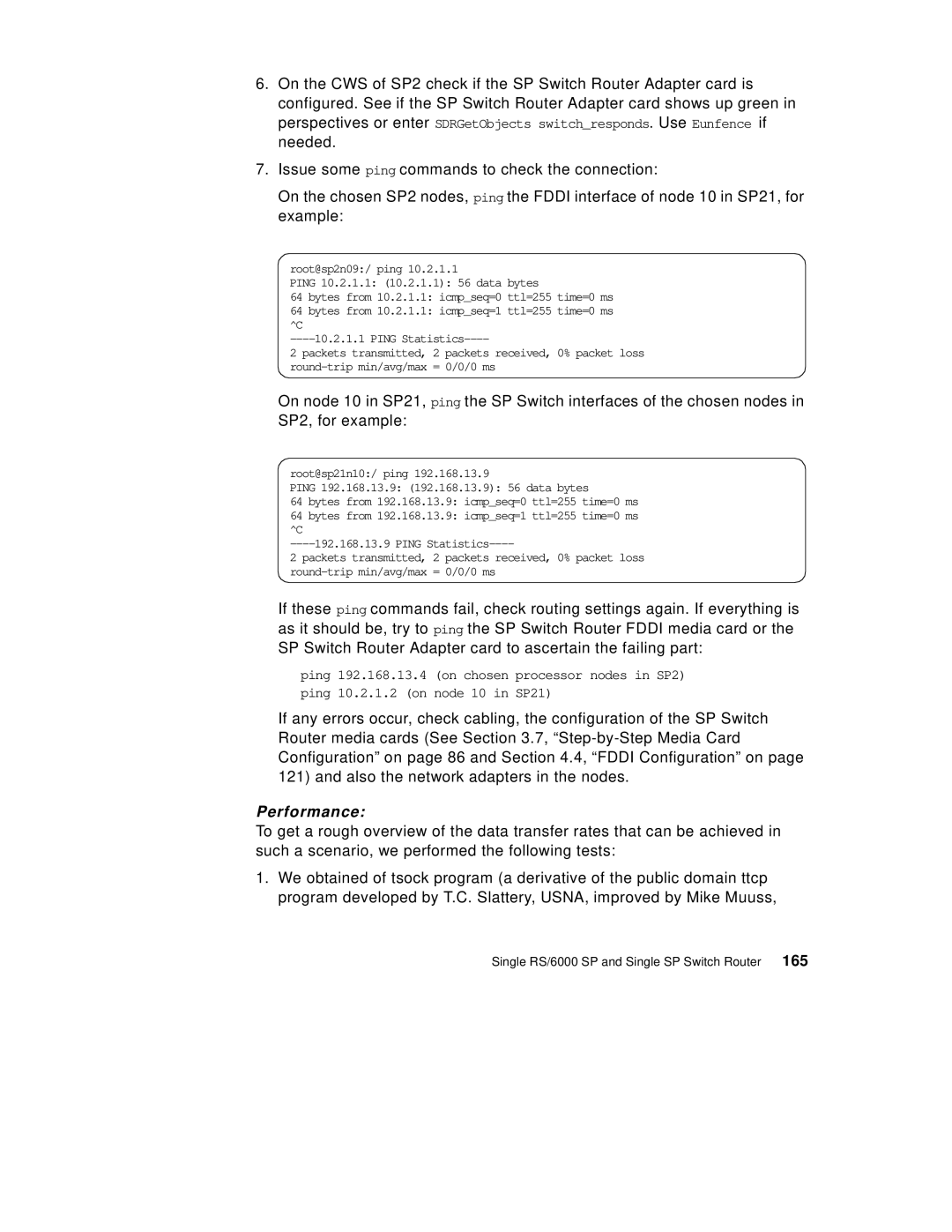
6.On the CWS of SP2 check if the SP Switch Router Adapter card is configured. See if the SP Switch Router Adapter card shows up green in perspectives or enter SDRGetObjects switch_responds. Use Eunfence if needed.
7.Issue some ping commands to check the connection:
On the chosen SP2 nodes, ping the FDDI interface of node 10 in SP21, for example:
root@sp2n09:/ ping 10.2.1.1
PING 10.2.1.1: (10.2.1.1): 56 data bytes
64 bytes from 10.2.1.1: icmp_seq=0 ttl=255 time=0 ms
64 bytes from 10.2.1.1: icmp_seq=1 ttl=255 time=0 ms ^C
2 packets transmitted, 2 packets received, 0% packet loss
On node 10 in SP21, ping the SP Switch interfaces of the chosen nodes in SP2, for example:
root@sp21n10:/ ping 192.168.13.9
PING 192.168.13.9: (192.168.13.9): 56 data bytes
64 bytes from 192.168.13.9: icmp_seq=0 ttl=255 time=0 ms
64 bytes from 192.168.13.9: icmp_seq=1 ttl=255 time=0 ms ^C
2 packets transmitted, 2 packets received, 0% packet loss
If these ping commands fail, check routing settings again. If everything is as it should be, try to ping the SP Switch Router FDDI media card or the SP Switch Router Adapter card to ascertain the failing part:
ping 192.168.13.4 (on chosen processor nodes in SP2)
ping 10.2.1.2 (on node 10 in SP21)
If any errors occur, check cabling, the configuration of the SP Switch Router media cards (See Section 3.7,
Performance:
To get a rough overview of the data transfer rates that can be achieved in such a scenario, we performed the following tests:
1.We obtained of tsock program (a derivative of the public domain ttcp program developed by T.C. Slattery, USNA, improved by Mike Muuss,
Single RS/6000 SP and Single SP Switch Router 165
